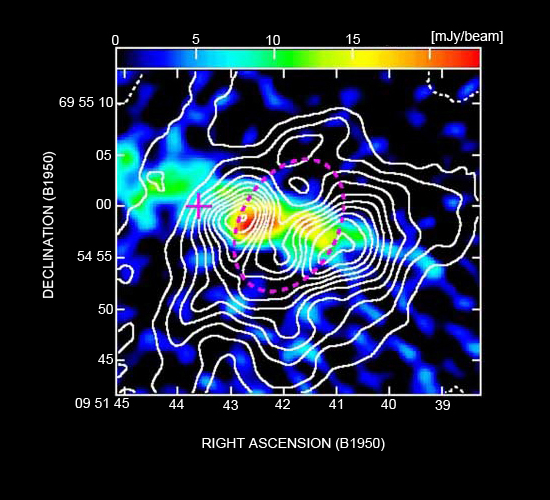Research Gallery > Extragalactic Astronomy
Research Gallery
Extragalactic Astronomy
| Active star formation |
|
Image Credit: Matsushita et al.

Active star formation at the inner edge of an expanding molecular bubble near the center of M82 (Matsushita et al. 2000, ApJ, 545, L107, Matsushita et al. 2005, ApJ, 618, 712).
|
| Thanks to recent improvement in the sensitivity of millimeter-/submillimeter-wave interferometers, we are starting to see very diffuse gas that could not be previously detected. Imaging molecular gas in active star-forming galaxies (so-called starburst galaxies) revealed giant molecular bubbles, which are expanding with energies comparable with that released from thousands of supernova explosions. Furthermore, intense star formation is occurring on the surface of these giant bubbles. These results indicate that there were many massive stars at the center of the bubbles in the past, and the supernova explosions at the end of their lives swept and pushed out the surrounding gas, triggering subsequent star formation. This chain reaction manifests itself as starbursts. Since galaxies formed through starbursts in the early universe, observations of starburst-related phenomena like this provide clues to modeling the formation and evolution of galaxies. |
 asiaa.sinica.edu.tw Media Request: epo
asiaa.sinica.edu.tw Media Request: epo asiaa.sinica.edu.tw
asiaa.sinica.edu.tw 
